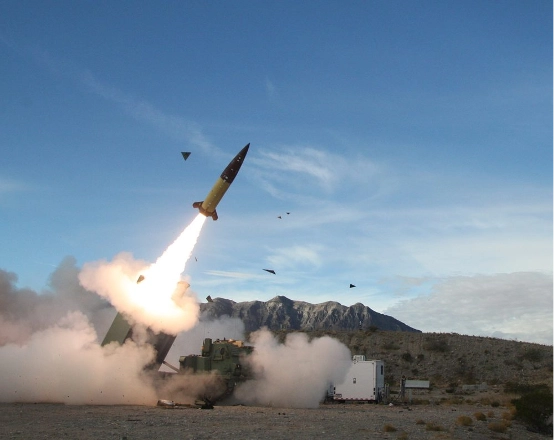As many as six massive explosions hit the Russian Dzhankoi military airfield in occupied Crimea during the early hours of Wednesday morning, with secondary blasts lighting up the horizon and local social media reporting a damaging long-range Ukrainian missile strike.
The weight of reports and information pointed to a successful strike by at least a half-dozen Ukrainian ballistic missiles starting at about 3:30 a.m. Kyiv time. Hours later Russian milbloggers claimed that US-made ATACMS missiles had been used in the attacks.
JOIN US ON TELEGRAM
Follow our coverage of the war on the @Kyivpost_official.
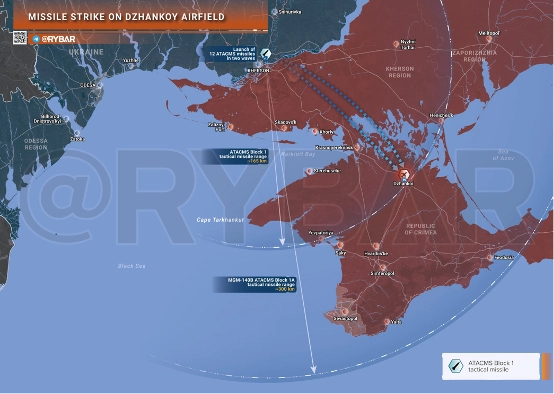
Authorities shut down roads around the major Russian Air Force installation, home to a significant military aviation infrastructure and close to 50 combat aircraft, then launched helicopters to patrol local air space following the attacks.
Civilian access to the area was under lockdown on Wednesday morning following the erection of road checkpoints by Crimea's occupation authorities on roads sometimes dozens of kilometers away from the Dzhankoi airfield.

Ukrainians Mark Valentine’s Day With Tears
Chat groups geolocated to northern Crimea said at least four powerful explosions followed by dozens of secondary explosions took place, and that no air raid warning had been announced before the blasts occurred. Some people posting in channels commonly used by residents of northern Crimea said they counted dozens of explosions.
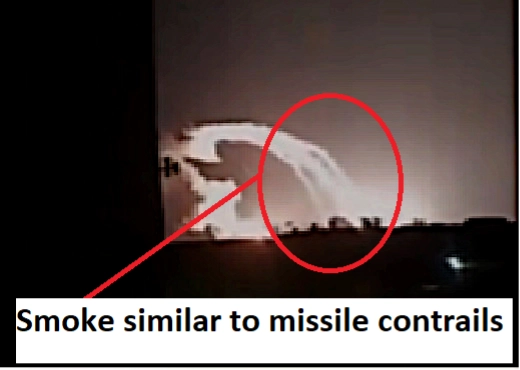
The independent Russian news agency Astra reported Ukrainian ballistic missiles targeted military equipment, pilots, bombers and attack helicopters. A probable hit or hits to a munitions depot set off fires with secondary explosions still in progress five hours after the attack, the report said.
The Russian analytical group Rybar Force, an information source banned in Ukraine, said that “around 12 ATACMS operational-tactical missiles” probably launched from Ukraine’s Kherson region were used in a two phase strike.
An initial wave of seven missiles armed with cluster munitions struck the airfield with the objective of destroying aircraft and causing casualties, and a second wave of five missiles armed with high explosive warheads followed up to target fuel reserves and ammunition storage, an April 17 analysis published by the group said.
Other Russian milbloggers repeated claims that Kyiv used US-made MGM-140 ATACMS surface-to-surface missiles to carry out the strikes, and that US reconnaissance aircraft assisted Ukrainian strike planners in carrying out the attack.
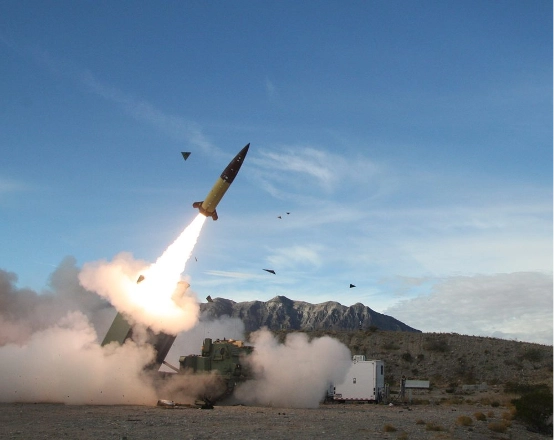
According to open sources, Washington turned over between 12 and 20 of the powerful weapons designed to wipe out airfields in October. Ukraine is believed to have launched most if not all of the missiles from that delivery to hit a pair of Russian airfields on Oct. 17 destroying between 9 and 15 attack helicopters and ground infrastructure.
Social media images geolocated to the area and timed to the early morning hours of April 17 showed around 10 explosions taking place in the vicinity of the Dzhankoi airfield in less than a minute. One video showed smoke trails very similar to contrails made by surface-to-surface missiles. Based on those contrails, at least five Ukrainian weapons flying in a ballistic-like trajectory were used in the attack on Dzhankoi, Kyiv Post analysis found.
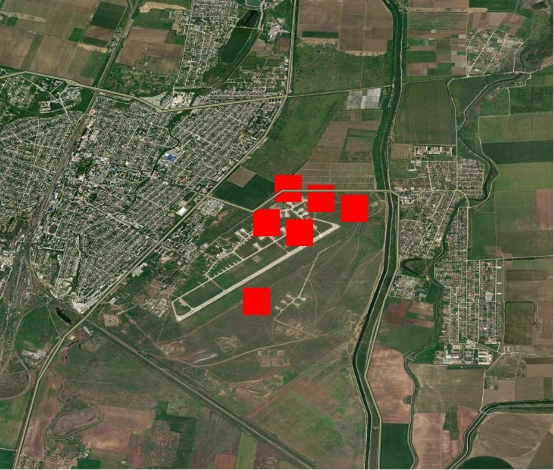
Some Russian milbloggers alleged US Air Force reconnaissance aircraft were in the air space near Dzhankoi at the time of the attack, assisting Ukraine's strike planners. According to the open-source air traffic tracker FlightRadar24, at around the same time of the Wednesday morning strikes, about 03:40 Kyiv time/00:40 UTC, a US Air Force Global Hawk reconnaissance drone was in the air above the Black Sea, some 360 km south of the airfield.
The $220 million Global Hawk with call sign Forte12 had been patrolling in air space south of Crimea for at least three hours prior to the strike. The aircraft headed back to its base in Sicily shortly after sunrise, Kyiv Post research found.
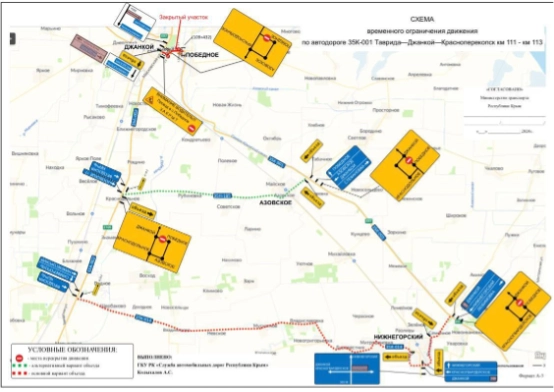
Major Russian combat units stationed at the Dzhankoi base include the 27th Combined Helicopter Regiment, the 39th Helicopter Regiment, an air division of Russia’s Border Troops command, Air Defense Command for Joint Forces South, and a logistics center storing Moscow’s main reserve of Zircon scramjet hypersonic missiles, Astra reported.
Ukrainian military intelligence situation estimates had placed at least four helicopter squadrons each operating 12 aircraft at the base, including Mi-8 transports and Ka-53, Mi-28 and Mi-35 attack helicopters.
Missile launchers, radars and support vehicles from an S-400 air defense system – Russia’s most powerful air space protection weapon billed in the past by the Kremlin as able to shoot down ballistic missiles – were deployed around the Dzhankoi base in March.
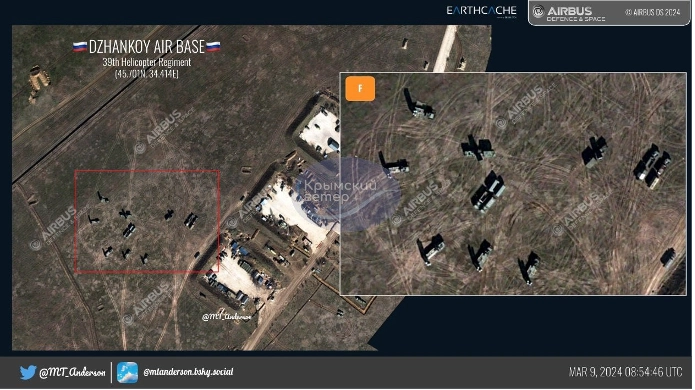
Open-source images from the NASA-operated VIIRS/Suomi satellite network showed six major fires burning in the vicinity of the airfield, some inside aircraft revetments.
The pro-Ukrainian milblogger Krymsky Viter claimed that at least 30 Russian service personnel died and more than 80 were injured in the strikes, and that the wounded were being transported to hospitals in Russia’s main naval base Sevastopol. Kyiv Post has not been able to confirm these casualty counts. However, multiple sources reported or published images of medevac helicopters operating around the Dzhankoi airfield.
The pro-Russia milblogger Voenniy Osvedomitel said that high explosive warheads carried by ATACMS missiles hit ammunition storage sites and aviation fuel reservoirs, but its source claimed “it was possible to avoid the most serious damage.”
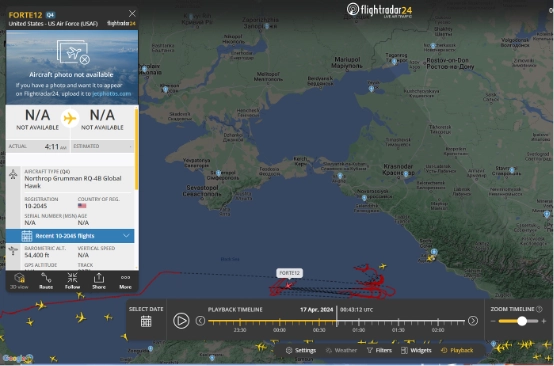
The Russian milbloggers Rybar and Dva Mayora claimed US-made ATACMS missiles were used in April 17 strikes by Ukrainian forces on Dzhankoi airfield. Kyiv Post reviews of open-source data found that the attacks and damage at Dzhankoi were confirmed, and that missile strikes highly likely took place. It was not possible to confirm that the missiles used were ATACMS because of currently insufficient detailed evidence.
You can also highlight the text and press Ctrl + Enter


